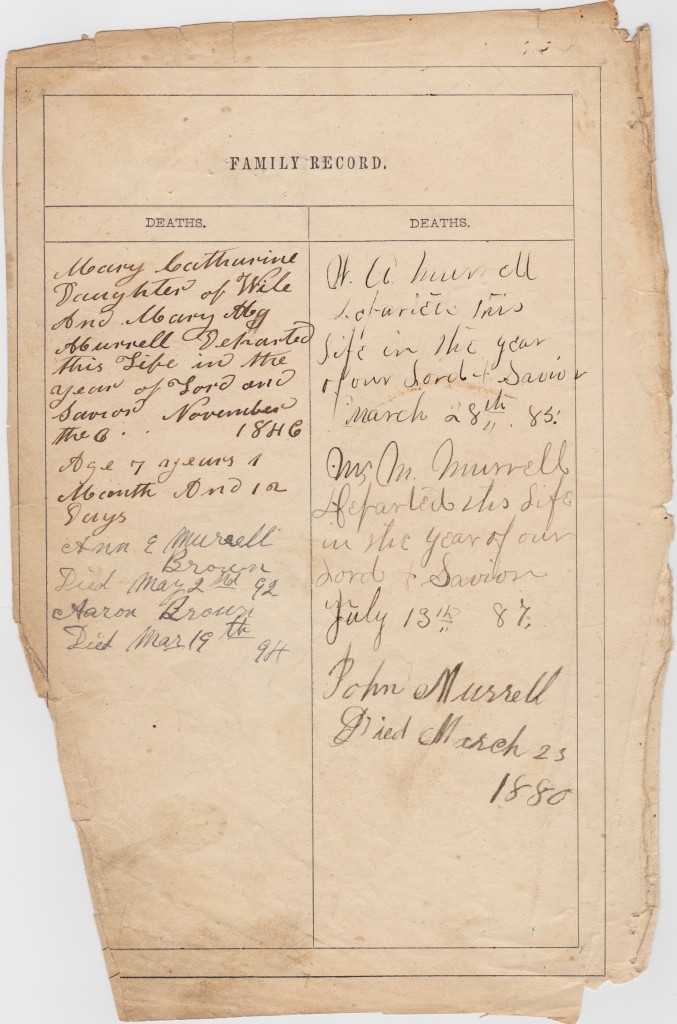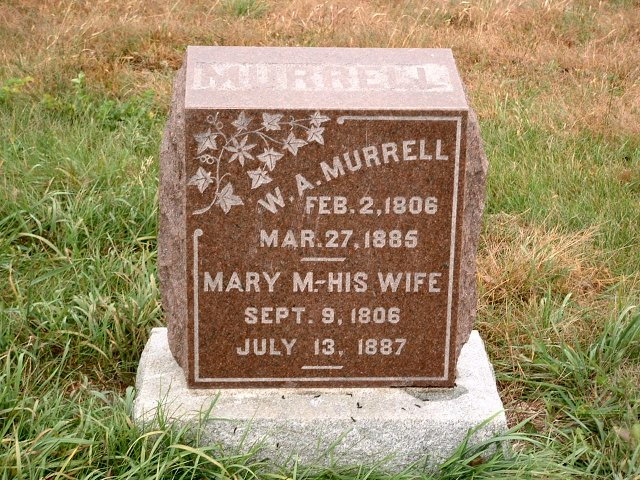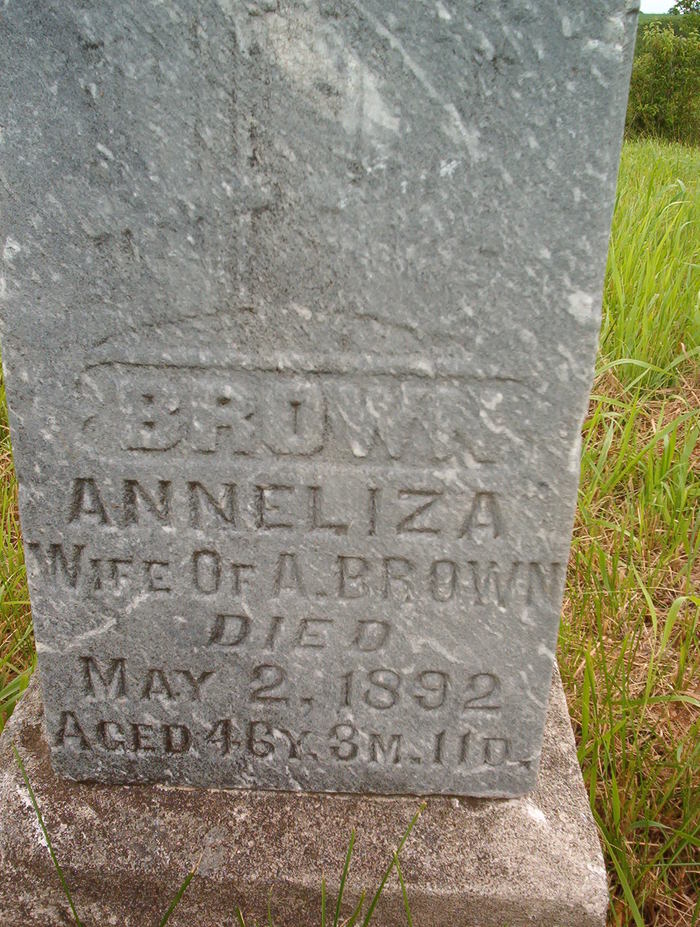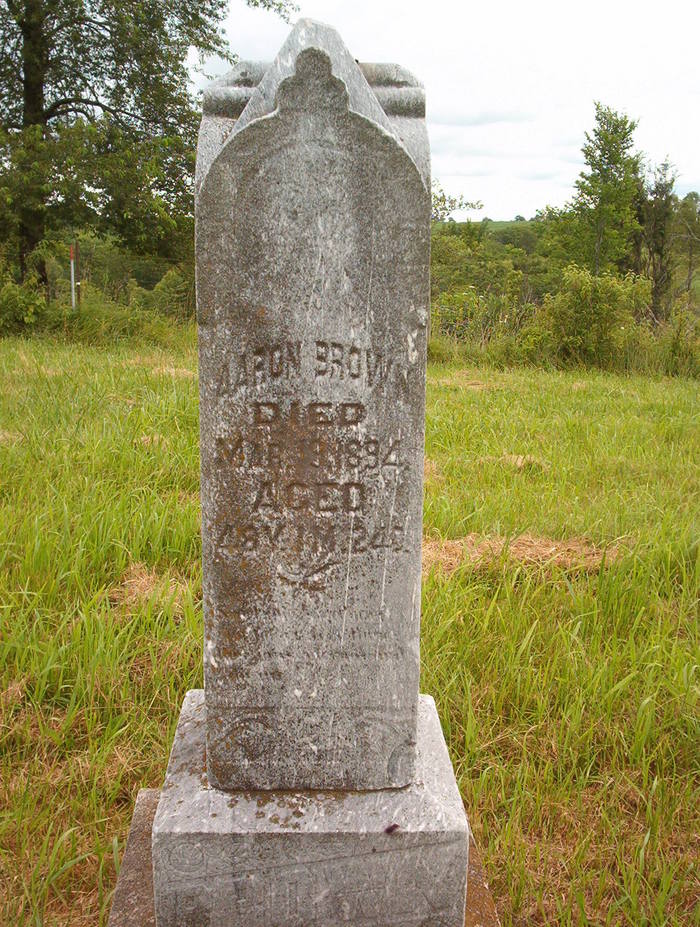Farming Friday: The Murrell Farm in 1850s Virginia

Roberts Family (Click for Family Tree)
Since farming has been such an important part of the American economy, especially for most of our ancestors, we are starting a new type of post called, “Farming Friday,” that will tell us a bit more about the places so many of our ancestors called “home.”
Farms varied greatly, and that plot of land wasn’t just “home” either. It was the family’s livelihood and place of business, whether that meant tilling the soil or churning butter and manufacturing cheese to sell to neighbors or in town. It was a place for social activity- barn raisings come to mind, but of course, there was all sorts of visiting between farms on an individual and small group basis, in addition to parties and special events like weddings. Even more special events took place on the farm too- quite a lot of our ancestors were born right in the bed they probably were conceived in, and may have later inherited for the circle to continue with their children.
Many of our ancestors held ‘unimproved land’ that most likely was wooded; the wood from these trees was an energy source for the fireplace for warmth, the cookstove for food, and even a place to hunt to provide meat to be cooked on that wood-fired stove or even earlier, in the fireplace. The woods were also a fun place for farm kids to hang out away from the prying eyes of adults, climb trees, and play tag. There was likely a bit of courting that went on in the woods, too, and maybe even a stolen kiss.
Agricultural schedules were taken along with the population census in the years 1850-1880, plus some states conducted an 1885 census that also enumerated farmers and their acreage, livestock, and products. Not all of these can be found today, as with most records, but we will tell the story of our family’s farms as we can with those schedules that have survived. Tax records and deeds also sometimes tell the story of a farm, so we will share those as well.
We have already told the story of Robert Woodson Daniel (1843-1922) and his wife Margaret Ann Hemphill (1839-1915) in an earlier post- see Those Places Thursday: Robert Woodson Daniel’s Iowa Farm in 1879. Today we will start our official new topic with the farm of Wiley Anderson Murrell (1806-1885) and his wife Mary Magdalen Hontz (1806-1887). The Daniel, Murrell, and Roberts families lived in Warren County, Illinois, at the same time, and we know that they knew each other. They may have migrated together, or encouraged each other to move after one family had made the trek to Jasper County, Iowa. The Murrells married into the Roberts family, as did the next generation of Daniels and Roberts.
If we look at the US Federal Population Schedule for 1850, it tells us that Wiley, age 41, and Mary, age 44 (ages were not always correct, whether on purpose or just ‘misremembered’), were living on their farm in District 8, Botetourt County, Virginia. Their daughter Elizabeth Ann Murrell (the maternal grandmother of our Edith (Roberts) [McMurray] Luck) was 15 and the oldest. She was probably often in charge of her brother John Henry Murrell, 13, William Murrell, age 9, James E. Murrell who was 8, and little Ann Elisy Murrell, then just 5. Wiley was listed as a farmer, but it was also noted that he could not read nor write. The whole family was born in Virginia, and none attended school within the year per the 1850 US Federal Census.


Although a small farm, the whole family would have been needed to make their living from it. The farm schedule was completed on 7 October 1850, and indicated that the Murrells had 45 acres of improved land to farm, and 85 acres unimproved. The entire cash value of the farm was $800- it was one of the smallest in the area. The farm implements and machinery were worth about $75- even adjusting for inflation, today’s farmers would scoff. Wiley’s implements and machinery would have be valued at about $2,240 in today’s money, which might not even buy a tire for one of the big tractors or combines used today.
Livestock was a mainstay on our ancestor’s farms- they did not have the ‘luxury’ of factory farming and concentrating on just one species of animal or one type of grain. They had to supply much of what the family needed, plus have a little surplus to sell for the necessities that they could not make on their own, such as cloth or sugar. So Wiley and Mary had 2 horses- likely draft horses for pulling a plow and a buggy or wagon; 1 ‘milch’ cow for making butter (the ladies manufactured at least 50 pounds) plus milk for baking and drinking. They also had 2 other types of cattle, possibly for beef. They did not list any oxen, which is why we think the horses would have been the sturdier work horses.
The Murrells also had 7 sheep, and they produced 17 pounds of wool in the previous 12 months. Mary and Elizabeth may have spent some of their evenings spinning the wool into yarn. They might have had their own loom, or provided the yarn to a neighbor who did have one, and then the neighbor would make the cloth and keep some of the yarn for herself in payment. Instead, they could have just sold the wool outright.
The total value of “home manufactures” was $30 per the 1850 Agricultural Schedule.


Pork has always been a staple in the American diet as pigs reproduce and grow quickly and without much fuss- one can even let them loose in the unimproved parts of the property to graze on acorns, etc., and fatten up. “Slopping the pigs” meant all the leftovers from mealtime, which some of us today would compost, went into a bucket and the contents were thrown out in the pig pen, to be biologically recycled into tasty bacon and ham. The Murrells owned 7 swine in October of 1850. The total value of all their livestock was about $165. They slaughtered animals worth $48 the previous year, and those may have been for home consumption and/or sale in town.
Mary and Elizabeth also probably had chickens and a large home garden with vegetables, herbs, and maybe some fruit trees. Of course, this was a part of “women’s work” so would not have been listed on the Agricultural Schedule. It probably is what helped keep the family alive, however, and women often sold eggs, cakes, etc. in town for a little extra money for the family.
Of course, one has to feed the livestock, and provide grain for the family, a little extra to pay the miller, and hopefully have some good seed for the next year. To that end, the Murrells harvested 91 bushels of wheat, 300 bushels of ‘Indian corn,’ and 33 bushels of oats, which would have been used as feed. If the family was of Scots-Irish descent (which we do not yet know), they may have also made porridge from some of the oats for many of their meals.
The Murrells also produced 200 pounds of flax, which was a fiber used to make linen, cording, etc. Linen was used as sheets and clothing until cotton became more available and less expensive. Wiley and family also produced 1 bushel of flaxseed, which could have been pressed for use as an oil and lubricant, or saved or sold as seed for the next year’s crop.
Wow, we have time-travelled through a farm year with Wiley and Mary Murrell in Botetourt County, Virginia. Looking at the population census and the agriculture schedule for the same year gives us great insight into what life was like for the family.
I am tired just writing about it. They must have quickly fallen asleep each night after such hard work, day after day. Gives one a new respect for our forebears, and makes one realize that the “good ole days” were maybe not that great after all.
Notes, Sources, and References:
- See also Robert Woodson Daniel https://heritageramblings.net/2015/04/30/those-places-thursday-robert-woodson-daniels-iowa-farm-in-1879
- 1850 Population schedule for Wiley A. Murrell & family. Census Place: District 8, Botetourt, Virginia; Roll: M432_936; Page: 156; Image: 547. 1850 United States Federal Census, Ancestry.com, online publication – Provo, UT, USA: The Generations Network, Inc., 2005. Original data – United States of America, Bureau of the Census. Seventh Census of the United States, 1850. Washington, D.C.: National Archives and Records Administration, 1850. M432.
- 1850 Non-Population schedule for Wiley A. Murrell & family. Census Year: 1850; Census Place: District 8, Botetourt, Virginia, “Selected U.S. Federal Census Non-Population Schedules, 1850-1880,” Ancestry.com online publication – Provo, UT, USA: Ancestry.com Operations, Inc., 2010.
-
-
- Inflation calculator- https://www.in2013dollars.com (but it does go to 2016).
- 5. This post will be published on Murrell Family Genealogy: A One-Name Study blog under another name.
-
Please contact us if you would like higher resolution images. Click to enlarge images.
We would love to read your thoughts and comments about this post (see form below), and thank you for your time! All comments are moderated, however, due to the high intelligence and persistence of spammers/hackers who really should be putting their smarts to use for the public good instead of spamming our little blog.





![A Maine Law Wanted, c1852, Page 3 [click to enlarge]](https://heritageramblings.net/wp-content/uploads/2014/02/1852c_A-Maine-Law-Wanted_p3-181x300.jpg)
![A Maine Law Wanted, c1852, Page 4 [click to enlarge]](https://heritageramblings.net/wp-content/uploads/2014/02/1852c_A-Maine-Law-Wanted_p4-179x300.jpg)




